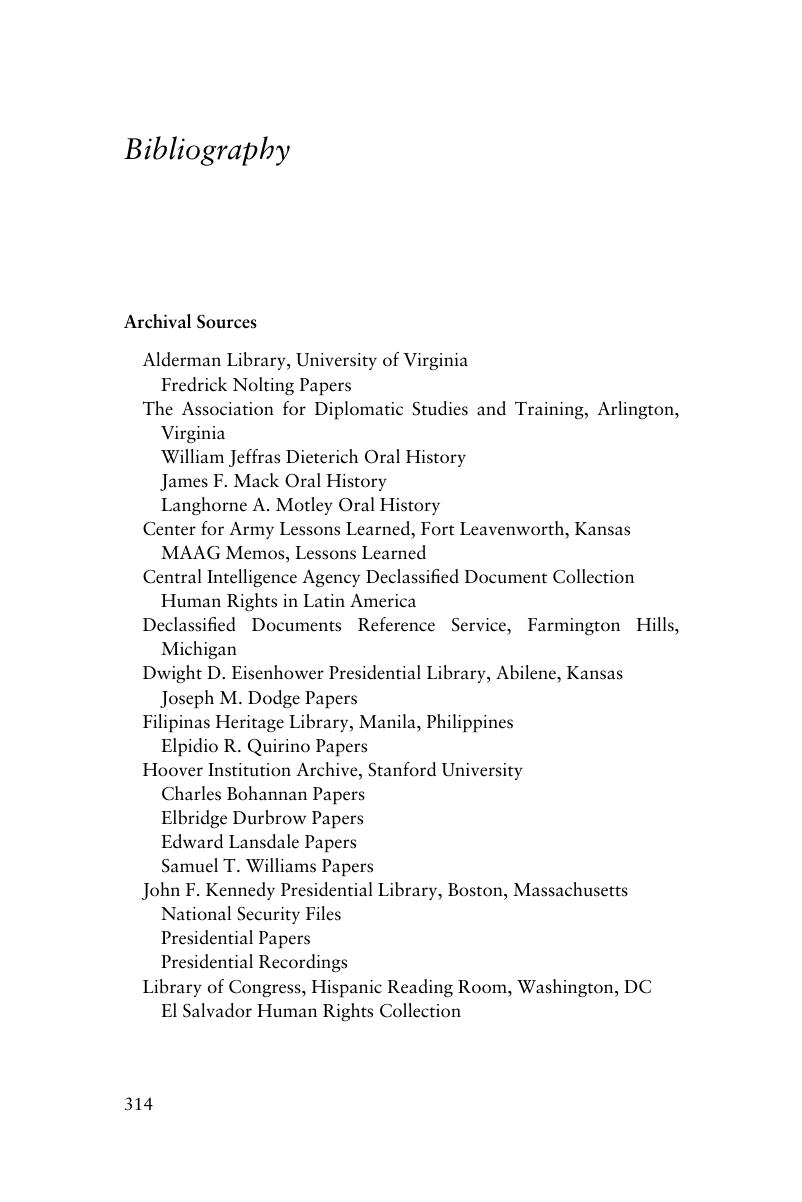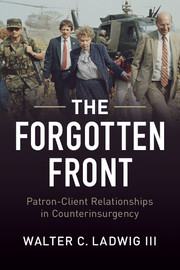Book contents
- The Forgotten Front
- The Forgotten Front
- Copyright page
- Dedication
- Contents
- Acknowledgments
- Archival and Primary Sources
- Acronyms and Abbreviations
- 1 A Recurring Obstacle
- 2 The Trouble with Allies in Counterinsurgency
- 3 Influencing Clients
- 4 America’s Boy? The Philippines, 1947–1953
- 5 The Puppet That Pulled Its Own Strings? Vietnam, 1957–1963
- 6 The Lesser of Two Evils? El Salvador, 1979–1992
- 7 Conclusion
- Bibliography
- Index
- References
Bibliography
Published online by Cambridge University Press: 04 July 2017
- The Forgotten Front
- The Forgotten Front
- Copyright page
- Dedication
- Contents
- Acknowledgments
- Archival and Primary Sources
- Acronyms and Abbreviations
- 1 A Recurring Obstacle
- 2 The Trouble with Allies in Counterinsurgency
- 3 Influencing Clients
- 4 America’s Boy? The Philippines, 1947–1953
- 5 The Puppet That Pulled Its Own Strings? Vietnam, 1957–1963
- 6 The Lesser of Two Evils? El Salvador, 1979–1992
- 7 Conclusion
- Bibliography
- Index
- References
Summary

- Type
- Chapter
- Information
- The Forgotten FrontPatron-Client Relationships in Counterinsurgency, pp. 314 - 340Publisher: Cambridge University PressPrint publication year: 2017



